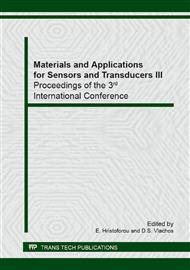p.453
p.457
p.461
p.465
p.470
p.474
p.478
p.483
p.487
Opto-Electrical Modeling of CMOS Buried Quad Junction Photodetector
Abstract:
A Buried Quad Junction (BQJ) PhotoDetector (PD), composed of four vertically-stacked p-n junctions, has recently been implemented and fabricated in CMOS technology. The detector, providing four different spectral responses, has higher spectral discriminating ability than both conventional Buried Double Junction (BDJ) and Buried Triple Junction (BTJ) detectors. For rapid system design integrating of the BQJ PD, we propose a BQJ SPICE-like model based on the physical properties of the device structure. The analytical expressions of the four BQJ photocurrents have been developed. Dark currents as well as intrinsic noise can also be evaluated by computations. Results have been compared with both TCAD simulations and measurements. Our model shows a good agreement with measurements and the mean relative error on spectral response prediction is between 6 % and 17 % in function of the observed junction.
Info:
Periodical:
Pages:
470-473
Citation:
Online since:
April 2014
Keywords:
Price:
Сopyright:
© 2014 Trans Tech Publications Ltd. All Rights Reserved
Share:
Citation:


